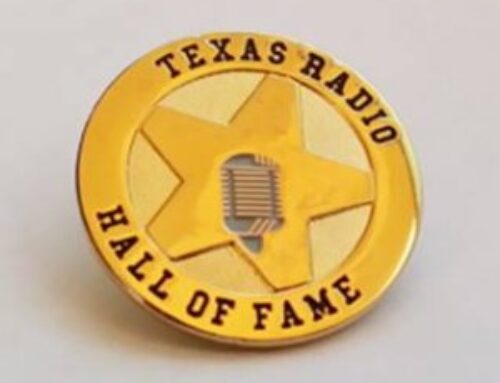Traditional AM/FM Radio or Spotify and Pandora?
Introduction:
A service Mitton Media provides to our clients is keeping them aware of the latest advertising trends in the marketplace. Even more importantly, to help them separate “fact” from “fiction.”
One such trend is “radio listening preferences.” Listening to Traditional AM/FM radio versus listening to Spotify, Pandora, and other online sources. Here are a couple of examples of statements we hear on a fairly regular basis:
- “Nobody listens to the radio anymore. Especially Millennials.”
- “Nobody listens to traditional radio anymore. Today it’s all about online listening.”
It’s time to separate FACT from FICTION:
Using the most current research, from several different sources, we put together this short Fact Sheet to make it easier for our customers to separate FACT from FICTION.
Is it a true? Doesn’t anybody listen to traditional AM/FM radio anymore? 
Let’s break it down:
- Many folks accept at face value the false narrative that young people (aka Millennials) have stopped listening to radio.
- It’s easy to fall for this “professional blogger opinion” if you aren’t paying close attention to what Millennials value in terms of content. If you are paying close attention, the facts suggest otherwise.
- The truth is, according to the most research from Nielsen, is that radio’s weekly reach among the millennials across the country is 92 percent. What other medium reaches 92% of Millennials on a weekly basis? (None.)
- Some claim that Pandora and Spotify will threaten the reach of AM/FM stations. The most current research does not support these claims.
- While we see the rise of streaming platforms like Pandora and Spotify, they are not directly threatening radio’s reach. AM/FM stations reach significantly more people than their streaming counterparts.
- Traditional AM/FM radio remains the number one consumer reach medium in the U.S., according to Nielsen.
- Radio has the most active users per month, totaling to 240 million consumers a month.
- AM/FM stations reach 97 percent of the U.S. adult population on a weekly basis.
- According to Edison Research, 74 percent of adults in the U.S. listen to AM/FM stations daily.
- Only 15 percent of adults are choosing Pandora and only 6 percent of adults are choosing Spotify.
- This puts Traditional AM/FM in the position to reach five times as many daily listeners as Pandora.
- The average time spent per day on the internet, tablets, smartphones, and radio has grown by 10 percent since 2015, according to Nielsen. Platforms like AM/FM radio, however, continue to make up the largest part of the media usage, with the most consistent share of time spent across all demographics in the U.S.
- Consumers, including millennials, have a deep emotional connection to their favorite stations and local personalities.
- While streaming platforms “target” their consumer growth, radio seeks to build personal relationships with their listeners.

- According to a USC Annenberg study, 82 percent of radio listeners perceive a deep connection with their favorite radio personalities, with 62 percent sharing what they hear on the radio with their families and friends.
- This connection is largely due to radio stations planting deep roots in local communities. Consumers often view their local stations and corresponding personalities as trusted friends who they can rely on to deliver news, weather, sports, traffic, local events, etc.
- The sizable reach among millennials and adults, coupled by the fact that 66 percent of radio consumption occurs outside of homes, puts traditional AM/FM radio in the best position to reach consumers close to point of purchase, according to Jacob’s Tech. (And for employers to reach and engage potential job applicants.)
- Radio is the “most mobile” among all of the major media platforms.
- Ironically, Radio is more mobile than mobile devices.
- According to Reality Mine’s measurement service, 36 percent of consumers are reached by FM/AM 30 minutes prior to a shopping event, surpassing mobile, TV, internet, social networks, and print.
- According to Tony Hereau, Nielsen VP of Audience Insights, radio listening begins its da
 ily dominance around 6am. Hereau says, “Once people get into their commute and work routine, that’s where radio really shoots up. So even though radio may not be the first thing they start their day with, it’s still a humongous factor all the way into early evening.”
ily dominance around 6am. Hereau says, “Once people get into their commute and work routine, that’s where radio really shoots up. So even though radio may not be the first thing they start their day with, it’s still a humongous factor all the way into early evening.” - Data from Nielsen reinforces Traditional AM/FM radio’s greatest usage is from 6am to 6pm, while TV takes over at night, capturing at least half
- of all media consumption from 6pm-6am.
- While the recent data shows radio commands the most consistent usage across all age groups, Hereau says, “When you look at some of the younger demos, like 18-34, the story is even stronger. There are even more hours where radio is the top medium for share during the morning.”
- It all comes down to this. Traditional AM/FM radio maintains its hold as the number one consumer reach medium for Millennials nationwide. Why? Because Radio is mobile friendly for the Ear Bud generation, and it connects with those that want to be part of their community.
- In addition, Nielsen’s Total Audience Report also reinforces traditional AM/FM radio as an equal opportunity reach medium with a consistent performance across demos, races and ethnicities.
Summary:
Yes, people are still listening to traditional AM/FM radio. Including one of the largest segments of the population, Millennials.
As a result of executing hundreds of successful radio campaigns, we can share these professional opinions and conclusions:
- The most effective, cost-efficient way to reach and engage a local audience is with a targeted ad campaign using local radio stations.
- Cost-efficient as related to return-on-investment for advertising dollars.
- Pandora, Spotify, and even Sirius/XM are not as effective at delivering a local message to local audiences as using local radio.
- They can’t match the Reach & Frequency numbers generated by local radio stations.
- They don’t have the same depth of emotional-connection with local audiences.
- Response time is not as immediate as that from local radio listeners.
- In our experience, Pandora, Spotify, and Sirius/XM are best used as a “national backdrop.”
- To remind listeners of something they have already heard about on their local radio stations.
- To reach that segment of the listening population that spends a lot of time in vehicles driving across the country.
(We gathered the most recent information about today’s radio listening preferences from a number of industry sources including Nielsen, Nielsen Total Audience Report, Reality Mine, Jacobs Research, and a recent article, “Millennials Love Radio. Wait. What?” by author Tim Murphy.)



